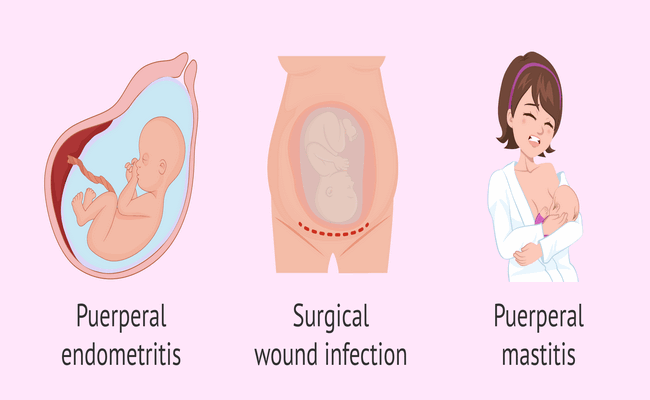Puerperal Sepsis Fever: Causes, Sign, and Symptoms
What Do You Mean by Puerperal Sepsis?

What are the Predisposing Factors of Puerperal Sepsis?
Many factors may make a woman more at risk of developing an infection. The following are the common predisposing factors of puerperal sepsis:
- Poor standards of hygiene.
- Poor aseptic technique.
- Manipulations are high in the birth canal.
- Presence of dead tissue in the birth canal due to prolonged retention of the dead fetus, retained fragments of placenta or membranes, shedding of dead tissue from vaginal wall following obstructed labor.
- Insertion of unclean hand, instrument, or packing into the canal.
- Pre-existing anemia and malnutrition.
- Prolonged labor.
- Prolonged rupture of membranes.
- Frequent vaginal examination.
- Cesarean section and other operative deliveries.
- Amniocentesis and other invasive procedures.
- Unrepaired vaginal or cervical lacerations.
- Pre-existing sexually transmitted diseases (STD).
- Postpartum hemorrhage.
- No, or inadequate immunization with tetanus toxoid.
- Diabetes.
- Wound hematoma.
- Young age.
- Low socioeconomic group.
What are the Causes of Postpartum Sepsis?
The major pathogens are causing sepsis during the puerperium have listed below:
- Streptococcus pyogenes also known as GAS,
- Streptococci,
- Staphylococci,
- Clostridium tetani or welchii,
- Escherichia coli,
- Staphylococcus aureus,
- Streptococcus pneumonia,
- Meticillin-resistant S. aureus (MRSA),
- Morganella morganii.
Common Symptoms of Puerperal Sepsis or Fever:
The following symptoms appear if the puerperal infection in women after childbirth:
- Fever (persistent spiking temperature suggests abscess),
- Rigors and chills,
- Diarrhea or vomiting,
- Breast engorgement,
- Redness and Rash (maculopapular rash),
- Abdominal /pelvic pain and tenderness,
- Wound infection – spreading cellulitis or discharge,
- Light vaginal bleeding,
- Offensive vaginal discharge,
- A productive cough,
- Delay in uterine involution (sub involution),
- Purulent foul-smelling lochia,
- lethargy,
- Reduced appetite.
More questions related to this article:
- What is puerperal sepsis?
- Mention some predisposing factors of puerperal sepsis.
- What are the causes of puerperal sepsis?
- What are the symptoms of puerperal fever?
- What causes maternal sepsis?
- How do you know if you have an infection in your uterus?
- How do I know if I have a postpartum infection?

Maria Khatun Mona is a Founder and Editor of Nursing Exercise Blog. She is a Nursing and Midwifery Expert. Currently she is working as a Registered Nurse at Evercare Hospital, Dhaka, Bangladesh. She has great passion in writing different articles on Nursing and Midwifery. Mail her at “maria.mona023@gmail.com”
